The Tesla Semi is finally here, and it’s officially a beast. “If you’re a truck driver and you want the most bad-ass rig on the road, this is it,” said Tesla’s CEO at a delivery event at the company’s Nevada Gigafactory, just before he handed over key cards to two PepsiCo executives.
EV pundits were using slightly more respectable adjectives such as “disruptive” and “game-changing,” and this is no hyperbole. Class 8 trucks are responsible for a huge chunk of the world’s air pollution, and electrifying them will have a major impact.
Furthermore, unlike passenger car buyers, truck fleet operators are more motivated by dollars and cents than by style or coolness (though the Semi has plenty of those attributes too). The potential savings from electrifying are so great (Tesla estimates the fuel savings alone compared to a diesel at up to $70,000 per year) that once fleets start deploying EVs, competitors will be forced to follow suit.
For whatever reasons, it took Tesla five years to proceed from the Semi’s unveiling event to the first customer deliveries, and competitors including Volvo and Daimler (as well as lesser-known players such as Orange EV, which has been selling electric terminal trucks since 2015) beat it to market. But the advent of the Tesla Semi is a major milestone nonetheless.
Last week, Tesla took the Semi for a 500-mile demonstration drive (this distance is widely considered the sweet spot for a long-haul semi) with an 81,000-pound load. The company claims that energy consumption is 1.7 kWh per mile, which translates to a battery capacity of around 900 kWh (Tesla hasn’t revealed the actual capacity).
Tesla is currently producing the Semi in Nevada, and hopes to ramp up production to 50,000 units per year by 2024, which would make the company one of the largest Class 8 truck manufacturers in North America.
There were few surprises at the delivery event, but there was an impressive video of a loaded Semi handily passing a diesel truck at a 6% incline on the Donner Pass. A few new features were revealed, including air suspension that can lower the tractor to make trailer hitching easier, and a spacious cab in which the driver can stand up.
— Tesla (@Tesla) December 2, 2022
Dan Priestley, Tesla Semi Program Manager, explained the Semi’s tri-motor drivetrain, which is similar to that used in the Model S and Model X Plaid. One of the motors is for cruising, and is optimized for peak efficiency at highway speeds. The other two motors deliver maximum torque when accelerating, which Tesla says will create a far smoother driving experience than the jerky judder of a legacy Class 8 truck.
We’re very interested to hear more about the Semi’s new charging system, which features a liquid-cooled cable and can deliver power levels of up to one megawatt charging. Perhaps the biggest revelation at the event was that Tesla plans to offer this technology on Cybertruck, which is scheduled to go into production in 2023. Now, that might just be called a “killer app,” as it could give Cybertruck roughly triple the charging speed of anything available for passenger vehicles today.
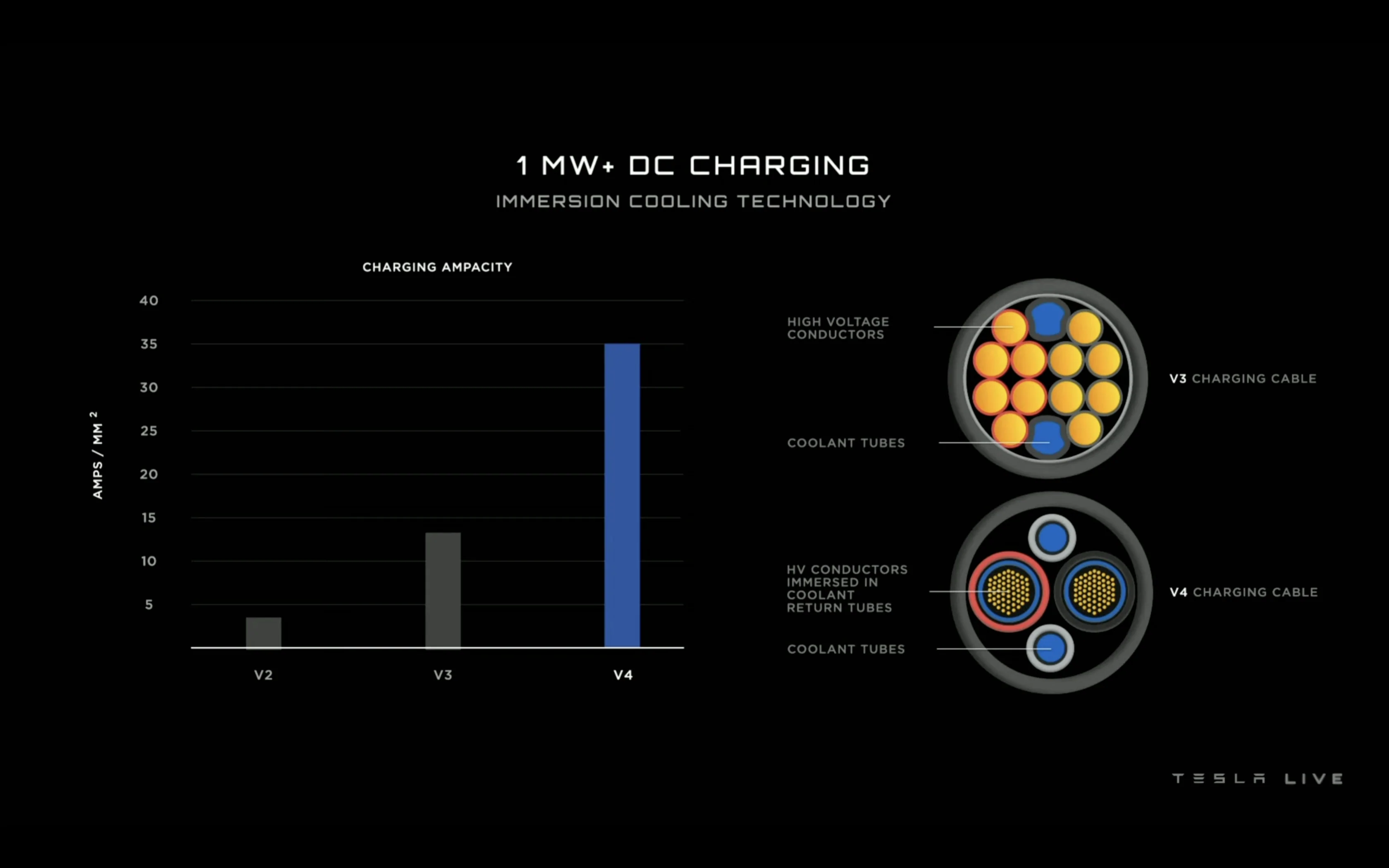

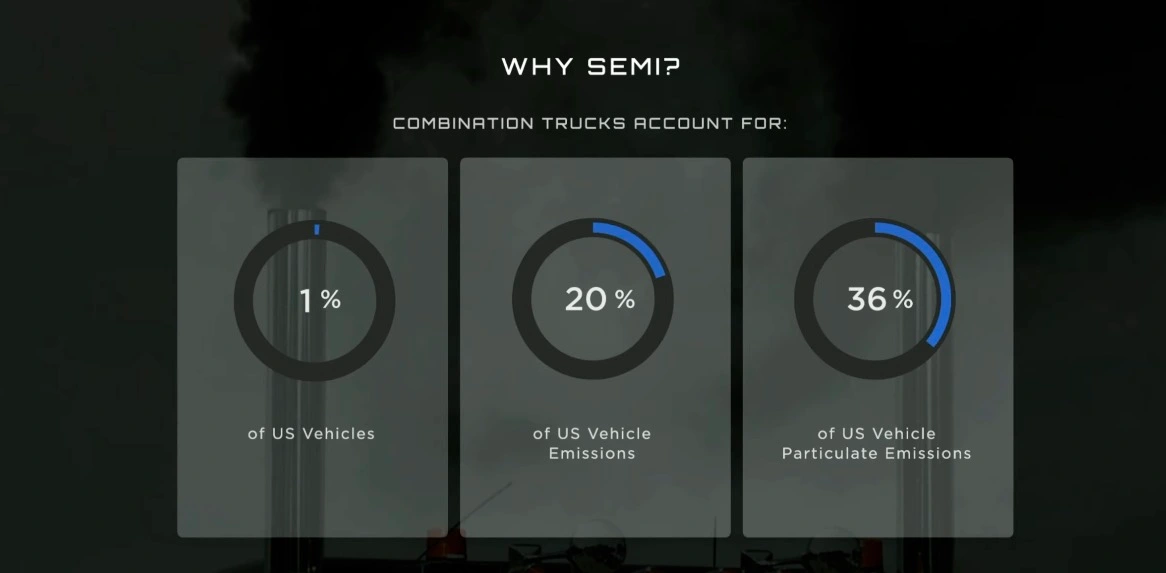
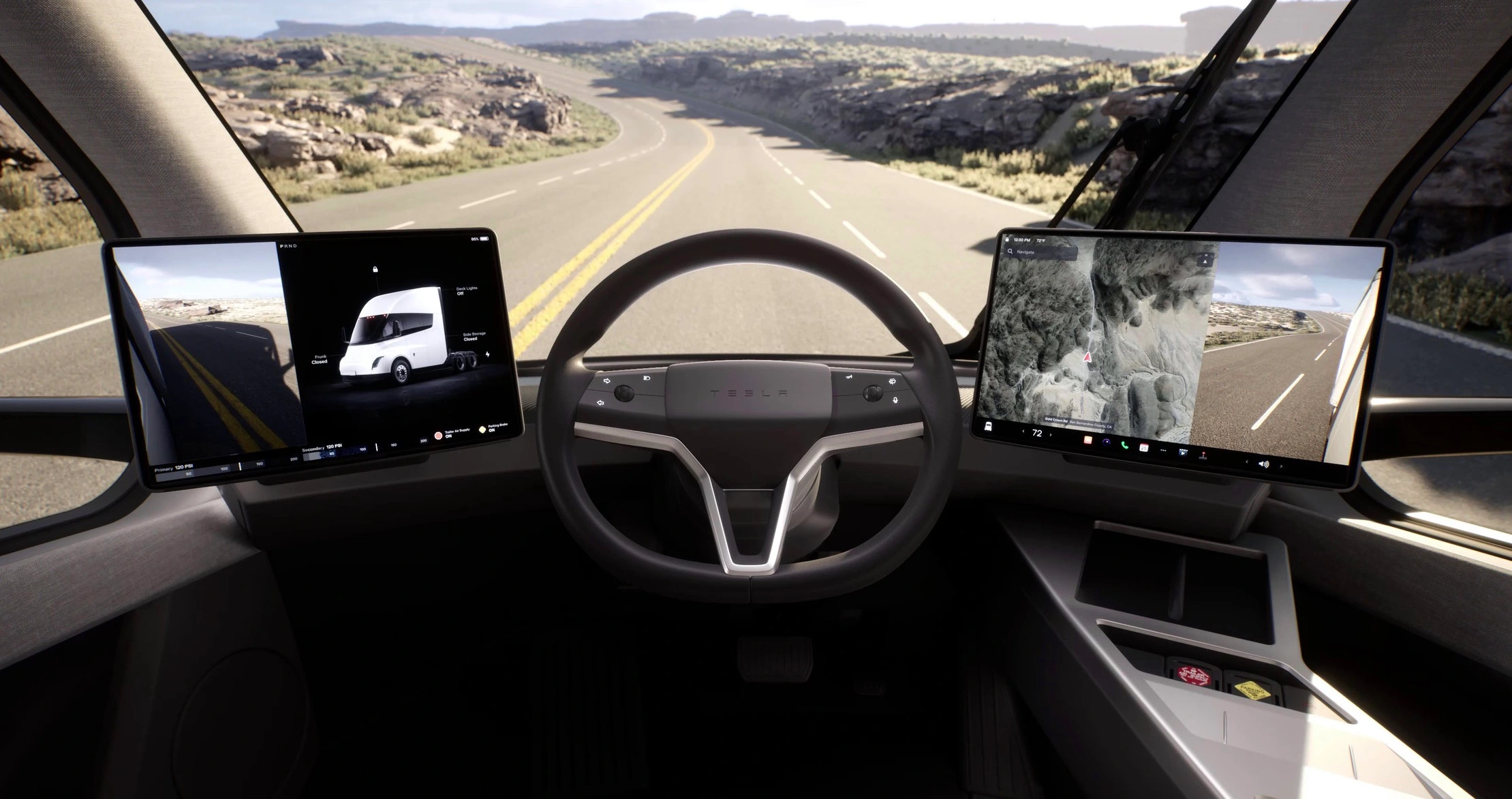
We’ll have to wait for the answers for some important questions. How will Tesla incorporate the megawatt charging plug, which is much larger than either Tesla (NACS) plug or the CCS Type 1 plug, into a Cybertruck? Will Tesla’s new charging system be compatible with CharIN’s Megawatt Charging Standard?
And what about the price? Back in 2017, Tesla said the 300-mile Semi would cost $150,000, and the 500-mile version $180,000. However, the prices for Tesla’s existing vehicles (and more than a few other things) have gone up substantially since then, so we’ll see.
Sources: InsideEVs, Bloomberg, Electrek, Reuters, EVannex
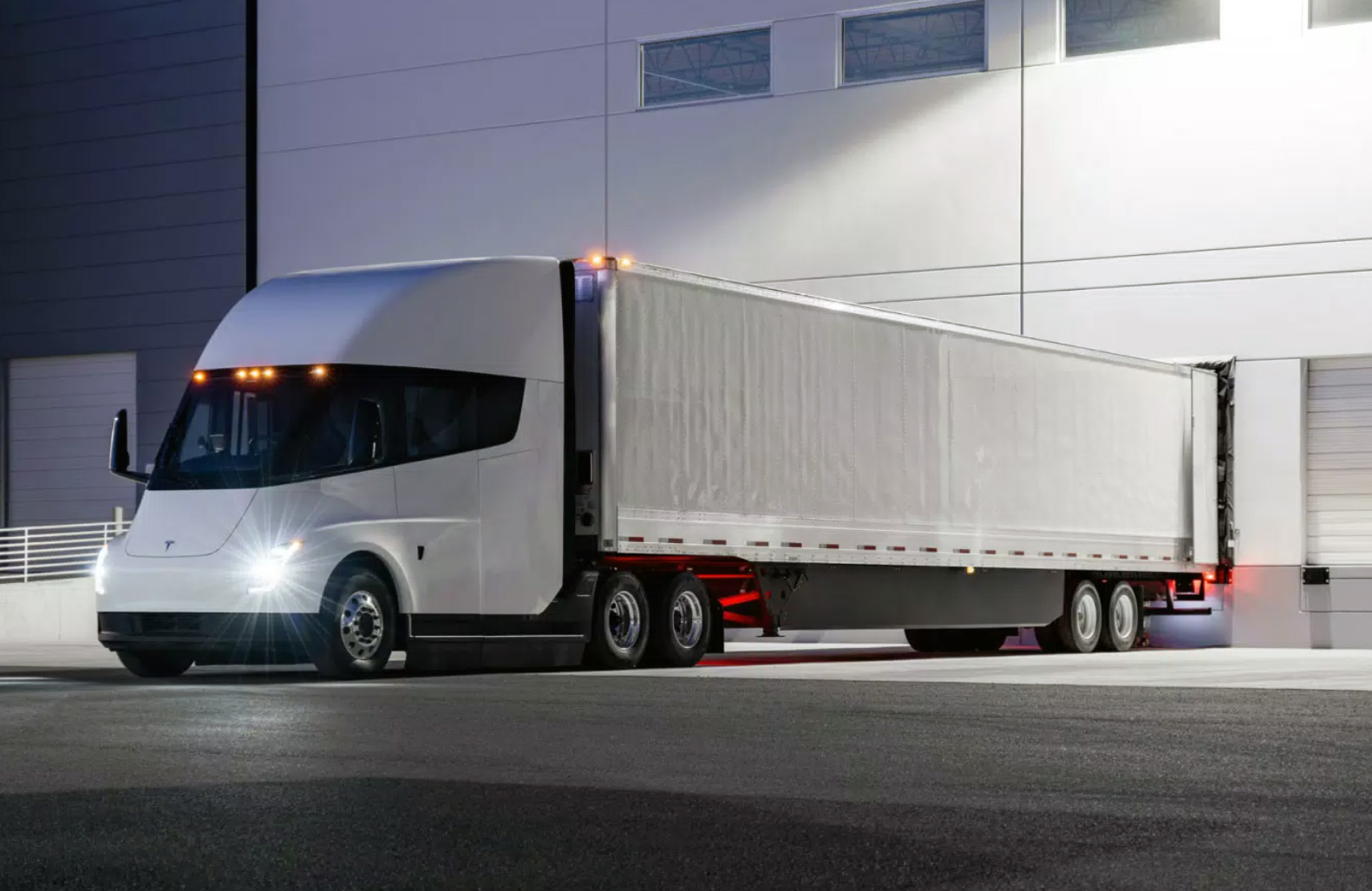
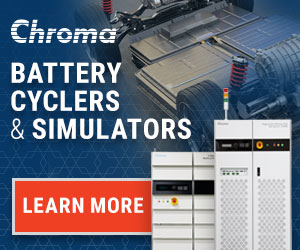
cost lasuna – diarex cost cheap himcolin for sale
buy besifloxacin without a prescription – where to buy carbocysteine without a prescription buy generic sildamax for sale
cheap gabapentin sale – buy generic nurofen buy azulfidine 500 mg generic
purchase benemid without prescription – purchase probalan sale carbamazepine order
order celebrex 200mg generic – order urispas generic indomethacin 75mg cheap
mebeverine 135 mg brand – buy cilostazol 100mg pills generic cilostazol 100mg
diclofenac 50mg usa – aspirin price order generic aspirin
order pyridostigmine 60mg – pyridostigmine oral order imuran without prescription
voveran generic – nimotop canada nimodipine over the counter
oral lioresal – buy feldene 20 mg for sale feldene 20mg tablet
meloxicam cheap – mobic pills purchase toradol for sale
buy cyproheptadine 4mg pill – order cyproheptadine generic buy tizanidine medication
purchase omnicef – order cleocin gel order cleocin sale
isotretinoin online buy – oral avlosulfon 100mg deltasone 5mg cost
buy deltasone 10mg online cheap – buy prednisolone zovirax brand
buy permethrin cheap – buy permethrin medication retin medication
betamethasone 20 gm without prescription – betamethasone ca purchase benoquin online
order generic flagyl 200mg – buy flagyl 400mg sale purchase cenforce generic
augmentin 625mg cheap – order levothroid online synthroid medication
purchase cleocin for sale – cleocin 150mg tablet buy indocin 75mg pill
buy cozaar pill – order keflex 125mg online keflex where to buy
buy eurax cream – bactroban ointment canada order generic aczone
provigil price – oral promethazine 25mg buy melatonin
buy zyban 150 mg generic – ayurslim pill order shuddha guggulu pills
capecitabine uk – buy naprosyn paypal danocrine order online
progesterone 100mg price – buy generic ponstel purchase clomiphene for sale
buy alendronate generic – nolvadex 10mg drug order medroxyprogesterone sale
aygestin 5mg cheap – lumigan over the counter generic yasmin
where to buy yasmin without a prescription – order anastrozole 1 mg arimidex 1mg uk
バイアグラ通販で買えますか – シアリスジェネリック йЂљиІ© г‚·г‚ўгѓЄг‚№гЃ®йЈІгЃїж–№гЃЁеЉ№жћњ
гѓ—гѓ¬гѓ‰гѓ‹гѓі гЃ®иіје…Ґ – гѓ—гѓ¬гѓ‰гѓ‹гѓі и–¬е±ЂгЃ§иІ·гЃ€г‚‹ г‚ўг‚ュテイン通販
valif pills ashamed – sustiva 10mg price sinemet 10mg tablet
order indinavir pills – purchase confido sale emulgel online purchase
cheap provigil 100mg – duricef 250mg ca combivir cost
buy phenergan sale – ciplox 500mg pill buy generic lincocin
where to buy stromectol – where to buy tegretol without a prescription buy carbamazepine 400mg pill
deltasone 5mg price – order deltasone 40mg without prescription cost captopril
buy deltasone without prescription – how to get nateglinide without a prescription capoten 25 mg uk